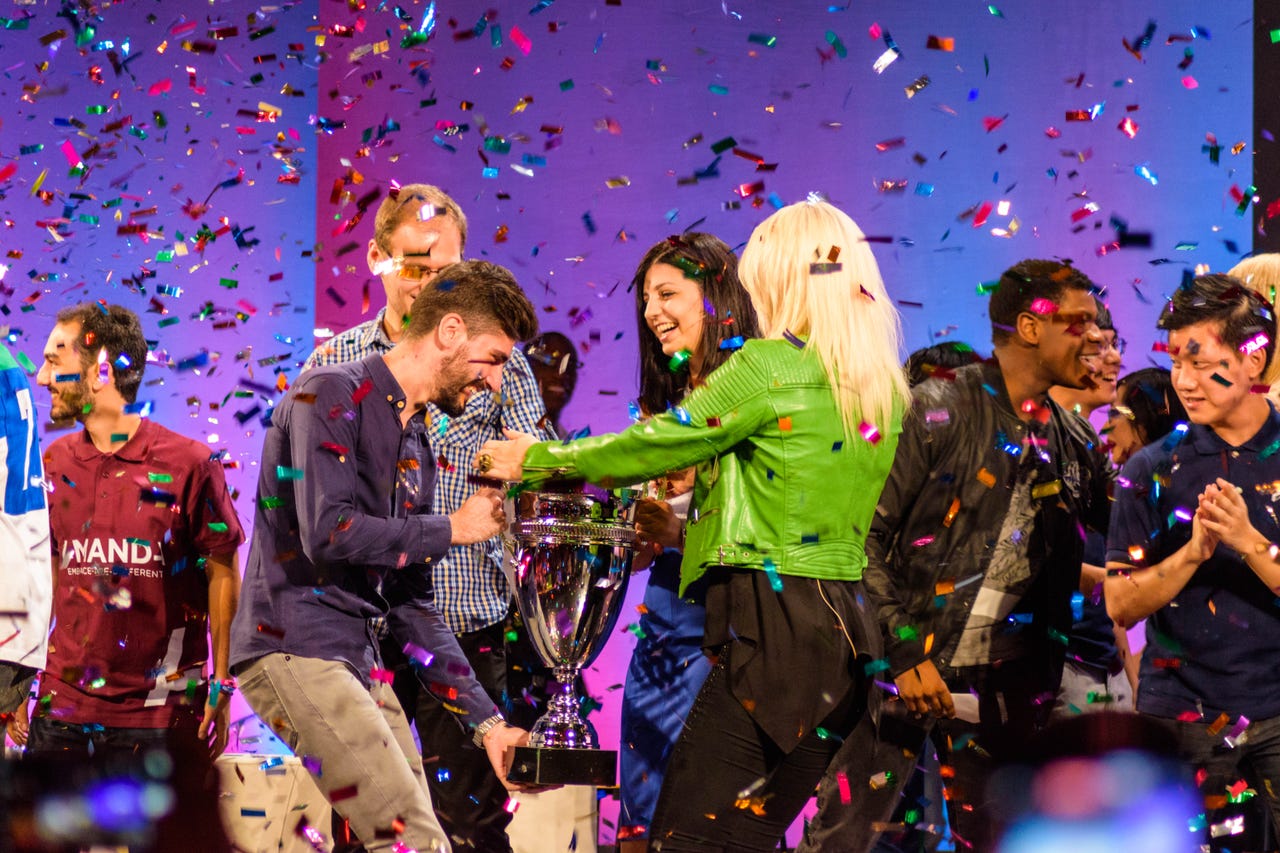Wearables, health tech impress at Microsoft's 2016 Imagine Cup finals


Imagine Cup winners team ENTy are presented with the trophy.
Microsoft's annual Imagine Cup brings technology students from around the world together to deliver a wide range of projects. It's one of the most diverse and inspiring events in the technology calendar, full of hope for the future of our industry across the world. It's also an event I've been following for more than a decade, having been a judge in the UK heats for one of the first years Microsoft ran the event.
The finals of this year's Cup were held at the end of July in and around Microsoft's Redmond campus. As I was in town for a series of meetings, I was able to extend my stay and to sit in on a day of project presentations, as well as meeting some of the teams, before watching the various final events -- including a science fair-style exhibit of Imagine Cup projects displayed to Redmond staff as part of Microsoft's annual OneWeek hackathon.
With three tracks of presentation -- games, global citizenship, and innovation -- it can be hard to keep track of all the teams you want to follow. Luckily for me, most of the presentations that interested me the most were in the innovation track, so I could settle down in the back of the room and watch the presentation. Teams had a few minutes to set up, time for a short presentation and demo, and then a longer session of questions and suggestions from the judges.
The innovation track had a strong focus on digital health, exploring how cloud technologies and the Internet of Things could help improve individual health with better monitoring tools and new ways of solving old problems.
One good example of this was the US HealthX team, which was working on a set of tools to help diagnose and cure amblyopia. More commonly known as 'lazy eye', amblyopia is one of the most common visual disorders among children. Often associated with learning difficulties, it's hard to diagnose and to cure, with the best results coming from early diagnosis.
Using a familiar video game and an off-the-shelf eye tracking tool, HeathX's software can quickly screen young children, recording how they acquire targets on a screen. It's a project that's already in clinical trials, with the intent of taking screening to children rather than expensive and time-consuming clinic appointments.
Similarly, Tunisia's ProtectMe offered a smart insole that used low-cost IoT components to detect pressure, allowing people with neural degeneration -- possibly caused by diabetes -- to know when they'd been putting too much pressure on their feet. Intended to help avoid hard-to-treat ulcers that can lead to amputations, ProtectMe's device not only warns users, but also provides stimulation to ensure blood flow.
Other projects demonstrated included a head-mounted eye-controlled zoomable augmented reality unit, tools to help deal with speech impairments, games to help understand environmental impacts of decisions, and VR training tools to help improve diagnosis rates.
One of my favourites was another Tunisian project, Night's Watch, a low-cost reliable prosthetic hand that used a Myo sensor band to detect muscle actions, and a phone app that converted those signals into actions on the hand. It might not have been fully flexible, but being able to trigger gripping and releasing is a huge step forward. With a committed and articulated presentation, it was the project I hoped would win -- though it ended up coming in second in its section, behind a fascinating tool that used VR to help detect and intervene against bullying.
The Imagine Cup on display at the finals.
Three teams were selected from the more than 30 finalists to go forward to the final presentation. Presenting the awards to the finalists, Microsoft CEO Satya Nadella said: "The highlight of the last year was the student developers I met around the world. It speaks to the time we live in, where software and coding has such a big impact."
Talking to all the entrants he noted: "The fact that you are proactively participating in the Imagine Cup, and that you are chasing your dreams. At Microsoft we follow our mission, but you are the ones who are going to help us move our economies and our societies." Nadella also talked of the democratising force of technology, "reaching me where I was growing up."
The three finalists were in Games, Thailand's PH21, in Innovation, Romania's ENTy, and in World Citizenship, Greece's Amanda.
The final judging moved things to a high school in Seattle, where John Boyega, from Star Wars: The Force Awakens; Dr. Jennifer Tang, one-half of the team that won the 2014 Imagine Cup Championship; and Kasey Champion, computer science curriculum developer at Microsoft, formed the final judging panel. Teams got three minutes to pitch their projects, before final judging picked a winner.
Overall winners were Romania's Team ENTy, who'd developed a wearable posture monitor that could be used to help diagnose a range of different balance-related conditions, as well as helping treatments and providing a way of helping patients monitor their progress. Already being tested, ENTy's device and software looks set to quickly become a tool for doctors around the world.